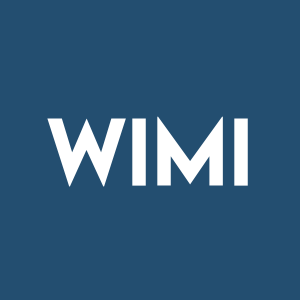WiMi Developed RPSSC Technology With Multiple Advantages in Hyperspectral Image Processing
Beijing, Jan. 03, 2024 (GLOBE NEWSWIRE) -- WiMi Hologram Cloud Inc. (NASDAQ: WIMI) ("WiMi" or the "Company"), a leading global Hologram Augmented Reality ("AR") Technology provider, today announced that it developed RandomPatchSpatialSpectrumClassifier (RPSSC) technology to fully utilize the complementarity between spatial and spectral information.
The R&D of WiMi's RPSSC combines a 2D Gabor filter and a random patch convolution (GRPC) feature extraction method. First, the RPSSC uses principal component analysis (PCA) and LDA algorithms to downscale the original hyperspectral image. The purpose of this step is to eliminate redundant spectral information while retaining the main information, increase the inter- and intra-class distance ratios, and prepare data for subsequent feature extraction and classification. On the dimensionalized image, RPSSC introduces a two-dimensional Gabor filter. Gabor filters are widely used in the field of computer vision to extract spatial structural features such as edges and textures of images. Through the Gabor filter, the RPSSC technology can capture the local texture and spatial information in the image, which lays the foundation for the subsequent feature extraction. Next, employed the GRPC method to the RPSSC, which takes Gabor features as input. Random patch convolution realizes the extraction of multilevel spectral features from an image by randomly selecting patches in the image and performing convolution operations on these patches. This step aims to synthesize spatial and spectral information, allowing the model to understand the features of the image more comprehensively. Finally, the RPSSC technology fuses the spatial features extracted from the GRPC with the multilevel spectral features. Through this fusion process, the model is able to synthesize the spectral information and local spatial structure information to provide a richer feature representation for image classification. Ultimately, RPSSC employs a support vector machine (SVM) classifier to classify the fused features to achieve accurate classification of hyperspectral images.
GRPC feature extraction consists of multiple layers and each layer contains the following steps:
PCA: PCA is performed on randomly selected patches to extract spectral features.
Whitening: The extracted spectral features are whitened to reduce redundant information.
Random projection: The whitened features are projected to a lower dimensional space by random projection.
Convolutional feature extraction: Convolutional operation is performed in the reduced dimensional space to extract multilevel spectral features.
WiMi's RPSSC technology has multiple technical advantages in realizing the comprehensive utilization of spectral and spatial features of hyperspectral images. It improves classification accuracy, reduces model complexity, and fully exploits the information of hyperspectral images to provide more effective solutions for practical applications. The technical advantages of WiMi's RPSSC are as follows:
Simple structure and excellent performance: RPSSC adopts GRPC, which has a relatively simple structure, but shows excellent performance in experiments. This simple structure makes the model easier to understand and optimize, and reduces the deployment cost in real applications.
Fully utilizing spatial and spectral features: RPSSC fully utilizes spatial and spectral features in hyperspectral images by combining 2D Gabor filters and GRPC methods. This combined utilization not only improves the classification accuracy, but also reveals the importance of spatial structural features that are often neglected in traditional methods.
Good adaptability: The RPSSC technology performs well in overcoming the pepper noise and excessive smoothing phenomenon in hyperspectral image classification is applicable to a variety of real-world scenarios and still achieves high classification accuracy even with a limited number of training samples. This is important for dealing with irregular environments and incomplete data in practical applications.
Stacking of spatial and spectral features: RPSSC realizes the effective stacking of spatial and spectral features, which enables the model to understand hyperspectral images more comprehensively. This comprehensive utilization not only improves the classification accuracy, but also enhances the model's grasp of the internal structure of the image, providing strong support for more detailed classification.
Applicable to limited training samples: RPSSC can still achieve high classification accuracy with limited training samples. This advantage is especially important in real-world applications because in some domains, obtaining large-scale labeled data can be difficult, and RPSSC's high efficiency makes it suitable for these challenging scenarios.
Effectively overcoming over-smoothing: In hyperspectral image processing, over-smoothing often leads to loss of information and affects classification accuracy, which is overcome by RPSSC through the combined use of spatial and spectral information, improving the accuracy of image processing.
WiMi's RPSSC has a wide range of applications in the field of hyperspectral image classification, and the RPSSC technology can be applied to hyperspectral remote sensing images collected by satellites and airplanes for land cover categorization, resource survey and environmental monitoring. For example, it can accurately classify farmland, forests, waters, etc., and realize the efficient management of natural resources. In the field of agriculture, RPSSC technology can be used for crop type classification, disease detection and soil analysis. By accurately classifying hyperspectral images, it can help farmers optimize agricultural production. Meanwhile, WiMi's RPSSC technology can be used for environmental monitoring, including urban planning, water quality monitoring, and vegetation cover monitoring. Through the comprehensive analysis of hyperspectral images, water pollution and ecosystem changes can be better monitored.
WiMi's future research directions include further optimization of the RPSSC algorithm to improve its computational efficiency and adapt to large-scale hyperspectral image data computation. Meanwhile, considering the important role of deep learning in the field of image processing, the fusion of RPSSC technology and deep learning may be a research direction in the future to further improve classification accuracy and the ability to handle complex scenes. For different fields and application scenarios, WiMi is committed to developing tailored RPSSC solutions to better meet the needs of different industries.
RPSSC technology marks an important breakthrough for WiMi in the field of hyperspectral image classification. By fully exploiting the spatial and spectral features in hyperspectral images, the RPSSC technology demonstrates outstanding performance and a wide range of potential application areas. While realizing more accurate classification, RPSSC technology provides a new way of thinking for solving the problems of model complexity and long training time that exist in traditional deep learning methods. WiMi's RPSSC technology represents the cutting edge of hyperspectral image classification. The continuous development and improvement of RPSSC technology will bring more impetus to scientific and technological progress, application innovation, and social development.
About WIMI Hologram Cloud
WIMI Hologram Cloud, Inc. (NASDAQ:WIMI) is a holographic cloud comprehensive technical solution provider that focuses on professional areas including holographic AR automotive HUD software, 3D holographic pulse LiDAR, head-mounted light field holographic equipment, holographic semiconductor, holographic cloud software, holographic car navigation and others. Its services and holographic AR technologies include holographic AR automotive application, 3D holographic pulse LiDAR technology, holographic vision semiconductor technology, holographic software development, holographic AR advertising technology, holographic AR entertainment technology, holographic ARSDK payment, interactive holographic communication and other holographic AR technologies.
Safe Harbor Statements
This press release contains "forward-looking statements" within the Private Securities Litigation Reform Act of 1995. These forward-looking statements can be identified by terminology such as "will," "expects," "anticipates," "future," "intends," "plans," "believes," "estimates," and similar statements. Statements that are not historical facts, including statements about the Company's beliefs and expectations, are forward-looking statements. Among other things, the business outlook and quotations from management in this press release and the Company's strategic and operational plans contain forward−looking statements. The Company may also make written or oral forward−looking statements in its periodic reports to the US Securities and Exchange Commission ("SEC") on Forms 20−F and 6−K, in its annual report to shareholders, in press releases, and other written materials, and in oral statements made by its officers, directors or employees to third parties. Forward-looking statements involve inherent risks and uncertainties. Several factors could cause actual results to differ materially from those contained in any forward−looking statement, including but not limited to the following: the Company's goals and strategies; the Company's future business development, financial condition, and results of operations; the expected growth of the AR holographic industry; and the Company's expectations regarding demand for and market acceptance of its products and services.
Further information regarding these and other risks is included in the Company's annual report on Form 20-F and the current report on Form 6-K and other documents filed with the SEC. All information provided in this press release is as of the date of this press release. The Company does not undertake any obligation to update any forward-looking statement except as required under applicable laws.
Contacts
WIMI Hologram Cloud Inc.
Email: pr@wimiar.com
TEL: 010-53384913
ICR, LLC
Robin Yang
Tel: +1 (646) 975-9495
Email: wimi@icrinc.com









